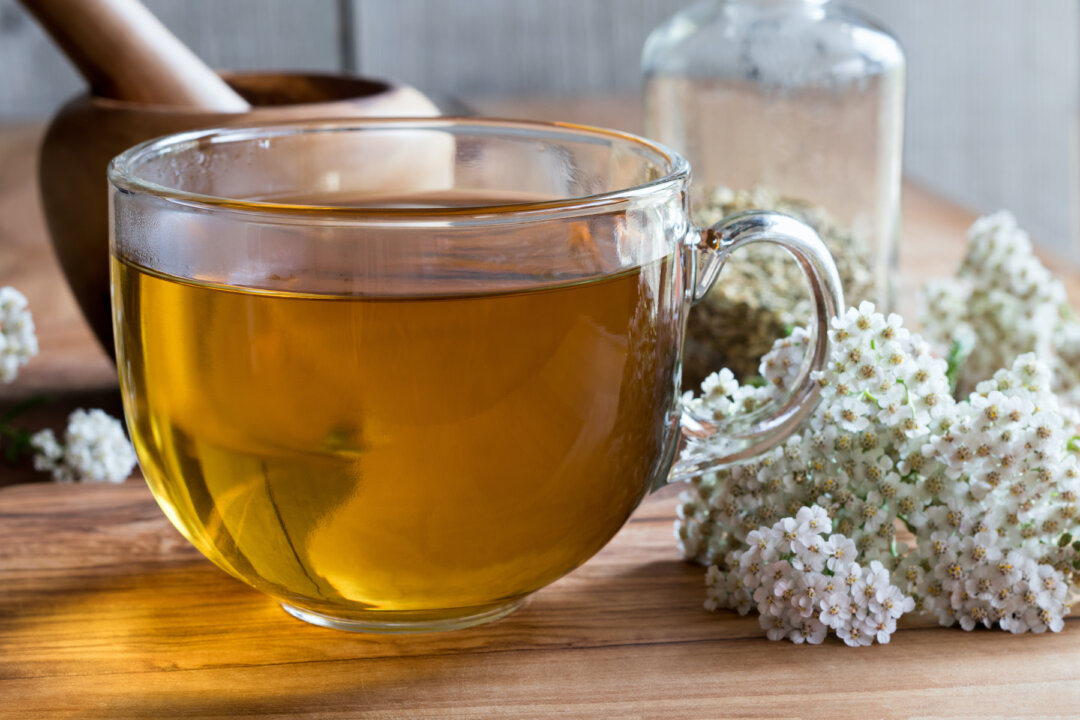If there were ever a herb with a resume longer than a bureaucrat’s wish-list, it’s yarrow.
Known to its mates as Achillea millefolium and to history as woundwort, devil’s nettle, or “that stuff stuffed up Scottish noses,” this feathery-leaved wonder has been patching up humans, both medically and emotionally, since before the concept of paperwork existed.
Yarrow is the overachiever of the herbal world. Native to Europe and now gallivanting across the globe (including Australia), it’s been found in ancient burials, Viking grog, and even used by Achilles to heal the wounded, hence the name.
Clearly, it was the original Panadol, Neosporin, and mood stabiliser in one rather pretty pink-and-white package.
A Botanical Swiss Army Knife
This perennial from the Asteraceae family thrives in everything from sun-drenched paddocks to scrappy roadside patches. It grows up to a dignified three feet tall and is not at all fussy, just give it some sun and half-decent soil.
Its leaves, stems, and flowers are edible, albeit with a bitterness that suggests it would rather be curing your ailments than garnishing your salad.
Its nutritional calling card? Flavonoids, carotenoids, and sesquiterpenoids, compounds that sound like they belong in a pharmaceutical thriller.
There’s also thujone, a mildly psychotropic substance that may or may not be responsible for spiritual visions or, at the very least, questionable decisions involving moonlight and chanting.
Yarrow also moonlights as an ecological superhero. It feeds pollinators, supports insects, comforts nesting birds (it’s apparently great for deterring parasites in baby bird beds), and boosts the resilience of nearby plants.
It even gets bonus points for preventing soil erosion and improving fertility.
If it paid tax, it could run for mayor.
Medicine Through the Ages (and Across Continents)
Yarrow is essentially the herbal equivalent of duct tape.
From an ancient 60,000-year-old grave in Iraq to Scottish Highlands nosebleeds, it has been the go-to for wounds, fevers, toothaches, colds, asthma, and whatever else plagued our ancestors.
The Scots called it lus na fola, blood-weed and stuffed it up their nostrils with the grim determination of people who knew that mystical protection might also come with a sneeze.
Native Americans were equally enthusiastic. They brewed it, bound it, and blessed it, using it for burns, digestive complaints, infections, and the occasional bout of spiritual malaise.
Modern science has, begrudgingly, caught up. Studies confirm that yarrow is indeed anti-inflammatory, antiseptic, and antispasmodic. It helps with gastrointestinal woes, lowers blood pressure, and opens bronchial passages. A 2012 study even found its sedative effects comparable to diazepam, Valium, but leafy.
Yarrow may also help with women’s health. It’s been shown to assist with amenorrhea, and reduce mastitis pain.
More recently, animal studies suggest it might have antitumour effects by messing with lipid metabolism, particularly in pancreatic cancer.
It’s not just folk medicine anymore. It’s science with petals.
Myths, Magic, and Moonlit Rituals
Yarrow doesn’t just heal your cuts. It protects your soul, divines your future, and (allegedly) keeps fairies at bay.
In Irish folklore, it was one of the seven sacred herbs used to repel everything from bad luck to banshees. You’d pick it on May Eve or under a full moon with a black-handled knife, obviously.
For those prone to inconvenient hauntings, yarrow could be combined with betony and fennel, brewed in water poured over a church bell, and consumed to evict any demonic squatters.
Lovestruck dreamers tucked nine leaves under their pillows on Samhain to summon visions of their future spouses. Preferably ones without fairy entanglements.
Achilles, that dashing Greek hero, supposedly used it to heal spear wounds, which is not only convenient branding but also the ancient equivalent of slapping on a Band-Aid mid-battle.
The duality of yarrow, as both wound and healer, makes it the stuff of tragedy and triumph, Greek-style.
And if you’re wondering about its association with spiritual vision, remember the thujone? Burn enough yarrow, and you might just predict next Tuesday.
But Don’t Get Carried Away
Before you brew a teapot full of the stuff and start seeing visions of your great-aunt Edna, a few caveats.
Yarrow can cause drowsiness, increased urination, or skin irritation. If you’re allergic to ragweed or daisies, steer clear.
It also doesn’t play nicely with blood thinners or lithium. Pregnant women should avoid it entirely unless they fancy an impromptu herbal drama.
As always, herbs are not harmless just because they’re charming.
Culinary Curiosities
Yes, you can eat yarrow. Seventeenth-century peasants cooked it like spinach.
Today, it’s more commonly used in teas or sprinkled in salads like some kind of hipster tarragon. Its bitter-sweet flavour gives a bit of bite, and its antioxidant load makes it more nutritious than most things you’ll find in a crisper drawer.
In Conclusion
Yarrow is the herb that’s done it all. It has healed wounds on ancient battlefields, warded off supernatural threats, calmed anxious minds, and soothed inflamed stomachs. It’s been buried with the dead, used in romantic rituals, and sprinkled in salads.
A mystical multitasker with medical credentials, it’s part panacea, part plant whisperer. Just use with care, reverence, and maybe a side of mythology.



